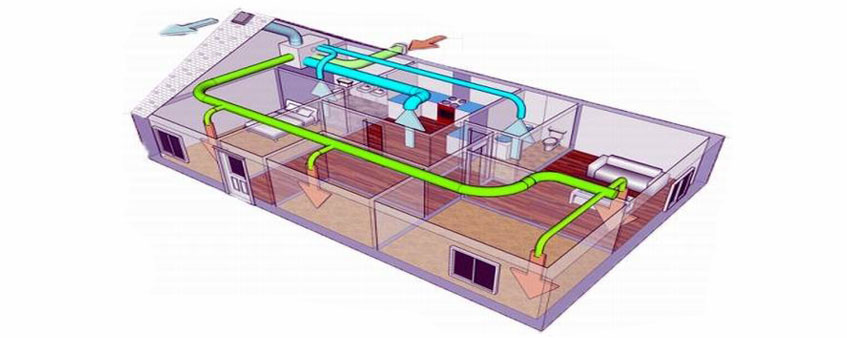
School Ventilation Systems
Why School Ventilation Systems Are Important?
For the health of the students, no one wants the classes to be airless and humid in kindergartens, primary schools, secondary schools and high schools. Humid and airless places are harmful places for our children and young people.
For this reason, private and public education institutions that are not air-conditioned departments; sports ventilation, game rooms, library, dressing rooms, kitchen, canteen and dormitory sections should be installed in the school ventilation system.
Types of school ventilation ducts; |
School Air filter types; |
|---|---|
|
|

School Toilets Ventilation
Air change in school toilets should be at least 5 times per hour. Thus, the air to remain inside remains fresh. The lines given to the classes and other areas and the lines given to the toilets should be kept separate so that the transfer of stenches from the toilet to the classes should be prevented when the ventilation system is not operating.
Ventilation of School Laboratories
While the exhaust ventilation is carried out with the hood to be placed on the test sets in the chemical laboratories, fresh air can be supplied from the points close to the ground. In this way, the gases to be released are discarded without inhalation and fresh air is replaced.
Kindergarten and Kindergarten Ventilation
Ventilation is required in kindergartens and day-care centers where children spend a long time. It is not enough that the dusty air that occurs in the playgrounds tries to be discharged by natural ventilation. Unfiltered air from outside will not be healthy for children. Ventilation and air conditioning systems are needed to keep the indoor temperature values constant and to refresh the air. Exhaust systems can be collected in the corridor outside the classrooms and disposed of. Pre-filter and bag filter should be used against respiratory diseases. Exhaust systems in toilets, bathrooms and kitchens should be independent of general ventilation. In places where it is not possible to install the ventilation system, the device that will constantly clean the air inside should be used. Thus, the air inside is cleaned with the help of activated carbon filters.
School Meeting Room Ventilation
Meeting rooms require ventilation, hot air heating or air conditioning. 50% - 75% of the heat requirement is met by the radiator. Air requirement should be given 30 m3 / h per person.
School Heating and Cooling with Heat Pump
Heating of school buildings with a heat pump is a very economical solution. The system can be air-borne, water-borne or earth-borne. There is not much need for cooling in schools because during the summer the schools are closed. If the heating system in schools is planned as floor heating during the construction phase, the operating costs will be very low. Energy consumption in schools is reduced by 30% compared to floor heating and radiator or fan coils. Areas in schools are larger and higher than other living spaces. Therefore, losses in radiator or fan coille heating systems are very high. The ambient temperature of 20 - 22 degrees in schools is sufficient for ideal comfort conditions. Healthy environments are created for children due to the fact that moisture balance does not deteriorate and there is no dust circulation. Fan coil devices provide cooling as well as heating. With the opening of the thermostat fan coil devices, heating and cooling is provided quickly. Fan coil units operate with noises, but the sound is not felt much in schools.











